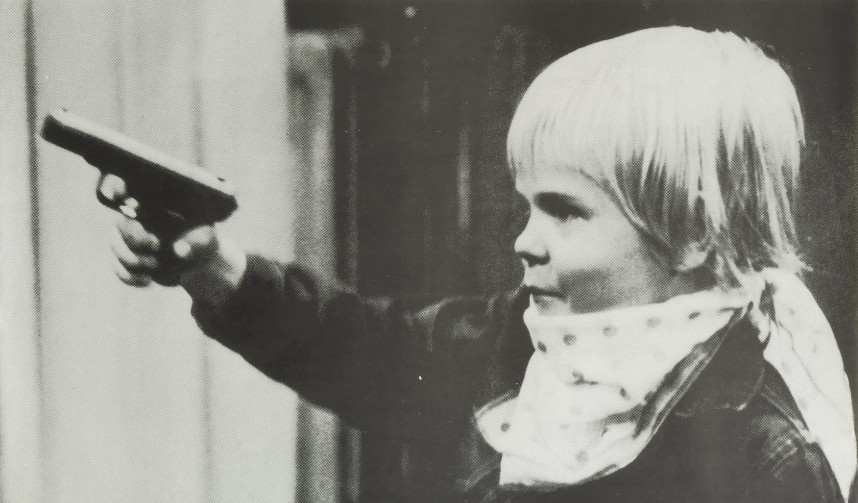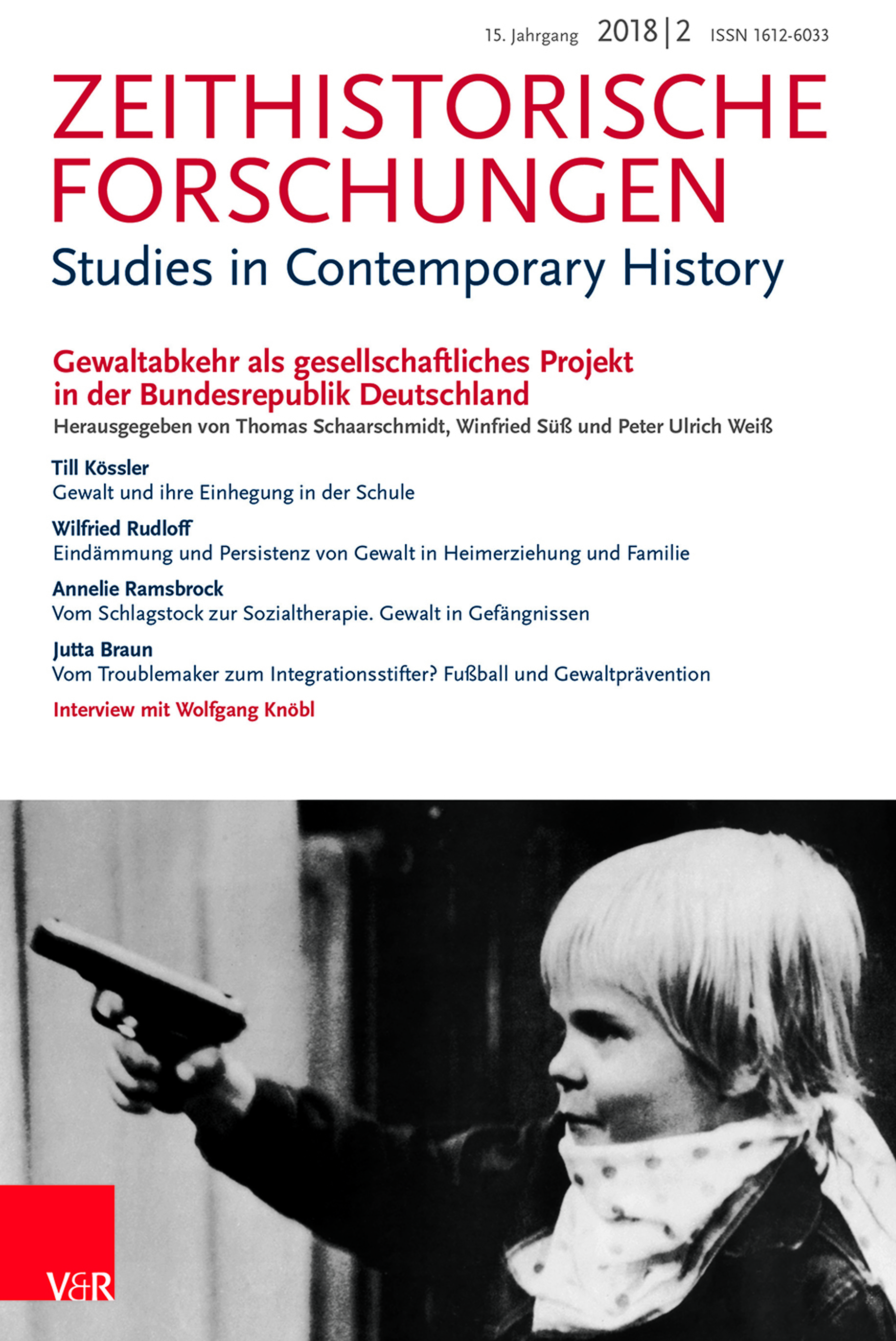Heft 2 / 2018
Aufsätze | Articles
Jenseits von Brutalisierung oder Zivilisierung
Schule und Gewalt in der Bundesrepublik (1970–2000)
AbstractGewalt an Schulen wird regelmäßig skandalisiert und erscheint oftmals als Symptom einer allgemeinen Verrohung von Gesellschaft. Demgegenüber haben viele Historiker/innen gerade die Schule in das Zentrum einer Zivilisierungsgeschichte der westdeutschen Gesellschaft seit 1945 gestellt. Der Beitrag nimmt diesen Deutungswiderspruch zum Ausgangspunkt einer Analyse schulischer Gewalt zwischen den frühen 1970er-Jahren und der Jahrtausendwende. Vorgeschlagen wird eine neue Lesart, die den Gegensatz der konkurrierenden Thesen von Gewaltzunahme und Gewaltabnahme aufhebt und stattdessen die sich wandelnden Vorstellungen dessen untersucht, was »Gewalt« eigentlich sei und wie sie überwunden werden könne. Seit den 1970er-Jahren mehrten sich die Arten von Gewalt, die mit Schule in Verbindung gebracht wurden. Eine Sensibilisierung gegenüber sehr unterschiedlichen Gewaltphänomenen war verbunden mit neuen Ansprüchen an Schule und schulische Kommunikation – Erwartungen, die von Lehrer/innen und Eltern als Fortschritt erfahren werden konnten, aber auch als Zumutung und Überforderung.
* * *
Beyond Brutalisation or Civilisation. Schools and Violence in West Germany (1970–2000)In public discourse, school violence is often sensationalised and associated with a worrisome brutalisation of society. Many historians, on the other hand, see schools as the locus of the general civilisation of West German society after National Socialism. Taking these contradicting views as a starting point, the article examines school violence between the early 1970s and the turn of the century. It proposes going beyond the competing theses of brutalisation and civilisation and taking a more in-depth look at the changing conceptions of what ›violence‹ actually is and how it can be overcome. Since the 1970s, the forms of violence associated with schools have multiplied. The discovery of ever more varied shapes and shades of violence was intimately linked to new ideas and programmes seeking to abolish violence in the schools and classrooms. At the same time, however, these new initiatives drastically increased the demands on schools and educators. Some teachers and parents experienced the new demands positively, as part of a quest for a new democratic form of schooling, but many of them also felt increasingly steamrolled and overwhelmed by the task of freeing education from violence.
Eindämmung und Persistenz
Gewalt in der westdeutschen Heimerziehung und familiäre Gewalt gegen Kinder
AbstractGewalt in der Erziehung ist eine zentrale Untersuchungsebene, will man die Gewaltpotentiale einer Gesellschaft ergründen. Der Aufsatz beleuchtet zunächst die Bemühungen zur historischen Aufarbeitung der Missstände und Missbrauchstatbestände in der bundesdeutschen Heimerziehung: Welche Gewaltpraktiken waren hier anzutreffen, welche Erklärungsmuster wurden entwickelt, und welche Wandlungen sind seit den 1970er-Jahren eingetreten? Wer die Heimerziehung unter dem Gesichtspunkt der Gewaltabkehr beleuchten will, muss besonders auf die Nachfolgejahrzehnte schauen, in denen die Hilfen zur Erziehung grundlegend reformiert worden sind. Ein Blick auf die familiale Erziehungspraxis zeigt sodann, dass die Heimerziehung in puncto Gewalterfahrungen kein Sonderverhältnis darstellte. Während durch institutionelles und normatives Gegensteuern seit den 1970er-Jahren versucht wurde, der Gewalt in der Heimerziehung den Nährboden zu entziehen, bedurfte es für eine Abkehr von familialen Gewaltpraktiken in der Mehrheitsgesellschaft eines sehr viel längeren Wandlungsprozesses. Er ist in Deutschland auch mit der gesetzlichen Ächtung der körperlichen Züchtigung im Jahr 2000 noch nicht abgeschlossen.
* * *
Containment and Persistence. Violence in West German Reformatories and Domestic Violence against ChildrenViolence in education is a central issue when studying the potential of violence that a society exhibits. The article throws a light on the intense historical research on violence, abuse and neglect in West German reformatories from the 1950s to the 1970s: which forms of violence did the inmates have to endure, which interpretive frameworks were developed to explain the high levels of violence in these institutions, and what has changed since the 1970s? In order to understand how the culture of violence prevailing in the reformatories has subsequently been contained, one has to turn to the reform developments of the following decades. A further look at education practices in West German families shows that corporal punishment was no exception in domestic education either. The experience of violence was by no means limited to youth care institutions. While the countermeasures taken in these institutions from the 1970s onwards sought to remove the breeding ground for violence, a shift away from the practices of violence that were prevalent in the majority of German families required a much longer process of change. The legal prohibition of corporal punishment in Germany in 2000 has been just one step in this process, which is far from complete.
Vom Schlagstock zur Sozialtherapie
Gewalt in westdeutschen Gefängnissen
AbstractAm Beispiel der Strafvollzugsreform in der Bundesrepublik Deutschland thematisiert der Aufsatz Gewalt als Problem in Prozessen sozialer Ordnungsbildung, konkret: beim Umbau der westdeutschen Gesellschaft zu einem demokratischen Gemeinwesen. Gewalt als Handlungsoption war (und ist) in der Haft allgegenwärtig – nicht nur, weil die Insassen einander verletzen und sogar töten können, sondern auch, weil Gefangene potentiellen Übergriffen von Wärtern ausgesetzt waren. Auf welche Weise war die Bundesrepublik seit den späten 1960er-Jahren bemüht, insbesondere staatliche Gewalt gegen Gefangene einzuhegen und auch das Gefängnis als eine vom Liberalisierungsparadigma erfasste Institution erscheinen zu lassen? In welchem Maße wandelten sich Vorstellungen und Bewertungen von legitimer und illegitimer Gewalt? Durch mehrere Gefängnisskandale wuchs die Sensibilität der Medienöffentlichkeit und der Politik für Gewaltakte in Haftanstalten. Diesen sollte mit neuen Ansätzen der »Resozialisierung« begegnet werden, wozu unter anderem eine bessere Schulung des Personals zählte. Die Erfolge blieben freilich begrenzt, die Konzepte strittig. Das Gefängnis ist bis in die Gegenwart gleichermaßen ein Ort der Einhegung und der Entgrenzung von Gewalt.
* * *
From Truncheon to Social Therapy. Violence in West German PrisonsLooking at prison reform in the Federal Republic of Germany, the article investigates violence as a problem in processes of creating social order, specifically the restructuring of West German society into a democratic polity. Violence was (and is) ubiquitous in detention – not only because the inmates can injure and even kill each other, but also because prisoners were exposed to potential assaults by guards. How did West Germany endeavour to contain state violence against prisoners from the late 1960s onwards, and to present even prisons as institutions that reflected the paradigm of liberalisation? To what extent did ideas and perceptions regarding legitimate and illegitimate violence change? A number of prison scandals led to increased sensitivity in media coverage and in politics regarding acts of violence in prisons. These were to be countered through new ›social rehabilitation‹ approaches, including better staff training. But the success of such approaches remained limited, the ideas controversial. To this day, prisons are places where violence is both contained and unconstrained.
Vom Troublemaker zum Integrationsstifter?
Fußball und Gewaltprävention in Deutschland vor und nach 1989
AbstractDie Geschichte des modernen Fußballs ist auch eine Geschichte regelmäßiger Gewaltausbrüche unter Zuschauern und Fans. Diese Tendenz verstärkte sich in den 1970er- und 1980er-Jahren, wobei nicht nur die Bundesrepublik, sondern auch die DDR zum Schauplatz drastischer Gewaltereignisse wurde. Der Beitrag zeichnet nach, wie sich die Methoden und Standards der Gewaltprävention im Fußball während der vergangenen Jahrzehnte verändert haben. Untersucht wird vor allem das spannungsreiche Handlungsdreieck aus Sozialpädagogik, Sicherheitsstrategien der Polizei und gesellschaftlichem Engagement des Deutschen Fußballbundes (DFB). Erst im Angesicht der merklichen Radikalisierung der Fan-Gewalt nach dem Mauerfall fanden diese unterschiedlichen Akteure zu einer stabilen und konstruktiven Zusammenarbeit. Zugleich gewann die gesellschaftliche Rolle des Fußballsports an Gewicht. Das Fan-Milieu gilt mittlerweile als sensibler Indikator politisch-sozialer Spannungen. Zudem erweiterte der DFB seine rein sportpolitische Funktion und beansprucht heute die Rolle eines wichtigen gesellschaftspolitischen Akteurs.
* * *
From Troublemaking to Promoting Integration? The Prevention of Violence in German Football before and after 1989The history of modern football is also a history of violent outbursts among spectators and fans. Such incidents of drastic violence increased in number during the 1970s and 1980s, not only in the Federal Republic of Germany, but in the German Democratic Republic as well. The article reflects how approaches to preventing acts of violence in the world of football underwent considerable changes during the last decades. Particular attention is given to the methods applied by social workers, by the police and by the German Football Association. It was not until the 1990s that these three social actors agreed to cooperate on joint attempts to curb the brutality in German stadiums, something that had intensified markedly since the fall of the Wall. These efforts resulted in a new social role for football overall. Today the fan scene has come to be regarded as a sensitive indicator of political and social tensions. Furthermore, the German Football Association has extended its function beyond that of a purely sports-oriented organisation and considers itself an important social player.
Zitation
Redaktionsschluss
Erweiterte Suche

